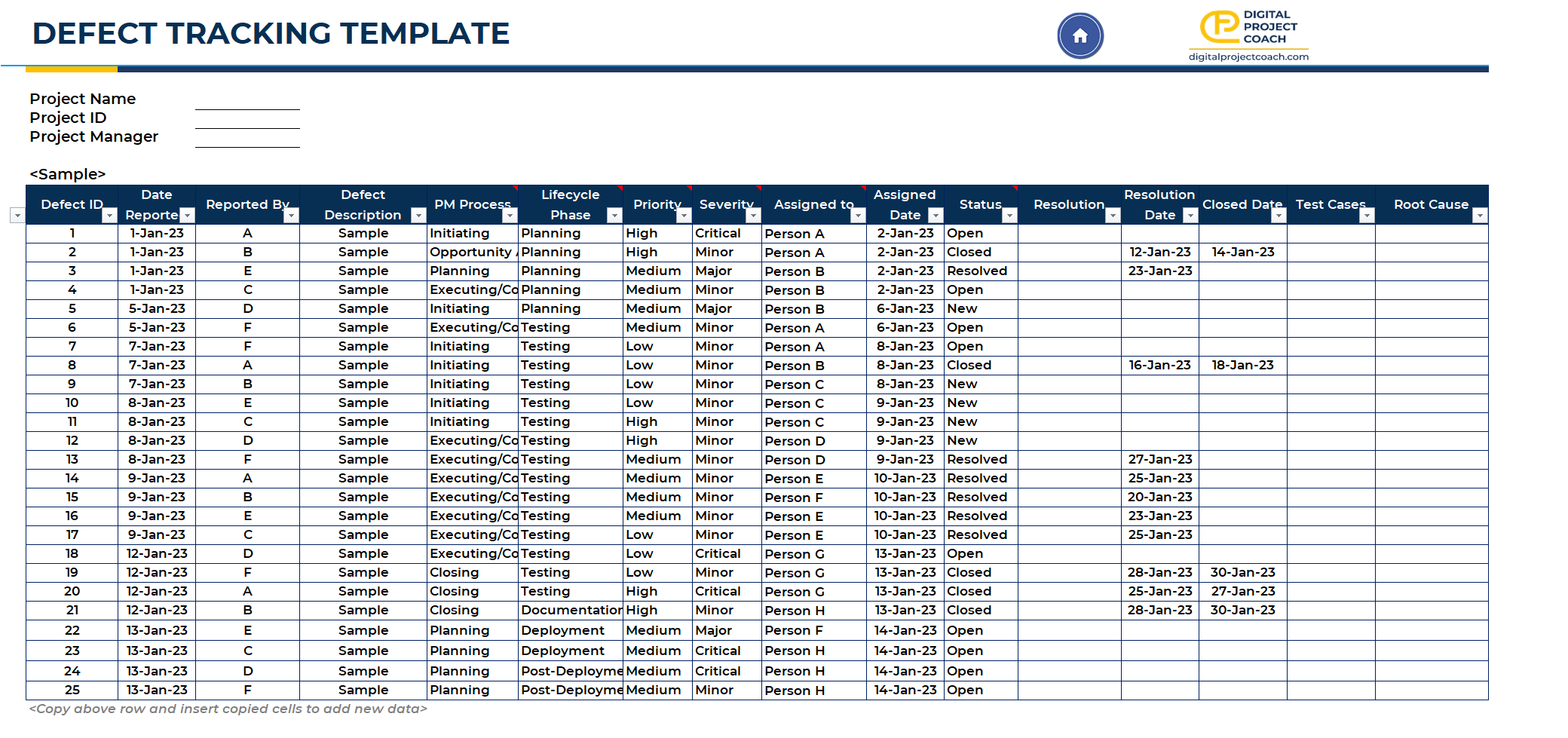Defect tracking is a critical aspect of project management, particularly in software development and quality assurance. Keeping tabs on bugs, issues, and improvements ensures that your project progresses smoothly and delivers a high-quality end product. One powerful tool for efficient defect tracking is an Excel Defect Tracking Template.
Organizing Chaos with Excel
Excel is a widely accessible and versatile tool, making it an excellent choice for defect tracking. Here’s how you can make the most of it:
- Structured Data Entry: Excel allows you to create a structured format for entering defect details. You can have columns for the defect’s ID, description, status, severity, priority, and more. This structured format ensures consistency and makes it easy to filter and sort data.
- Customization: Excel templates are highly customizable. You can tailor the template to match your project’s specific needs. Add or remove columns, modify labels, or incorporate additional features as required.
- Real-Time Updates: Excel templates can be updated in real-time, allowing team members to collaborate effortlessly. Multiple users can input and review defect information simultaneously, ensuring that everyone stays on the same page.
- Visualizations: Excel offers various charting and graphing options. You can create visual representations of defect data, such as pie charts to show defect distribution by severity or bar graphs for tracking defect resolution over time. These visuals provide a quick overview of project health.
- Automation: Excel supports basic automation through formulas and conditional formatting. You can set up rules to highlight high-priority defects or automatically calculate defect aging. This reduces manual work and ensures consistency in tracking.
The Benefits of Excel Defect Tracking Templates
Using an Excel Defect Tracking Template offers several advantages:
- Cost-Effective: Excel is readily available and doesn’t require additional software costs, making it a budget-friendly choice for defect tracking.
- Familiarity: Many team members are already familiar with Excel, reducing the learning curve for adoption.
- Customization: Tailor the template to match your project’s unique requirements, ensuring it aligns with your workflow.
- Accessibility: Excel files are easily shareable and accessible by team members and stakeholders.
- Efficiency: Structured data entry, real-time updates, and automation streamline defect tracking processes, improving project efficiency.
- Data Analysis: Excel’s data analysis features enable you to identify trends, patterns, and areas that require attention, facilitating informed decision-making.
In conclusion, Excel Defect Tracking Templates are powerful tools for project managers and quality assurance teams. They offer a cost-effective, customizable, and efficient solution for tracking defects, ensuring that your projects progress smoothly and deliver high-quality results. Whether you’re developing software or managing any project with quality control needs, consider implementing an Excel Defect Tracking Template to streamline your defect management processes.












Reviews
There are no reviews yet.